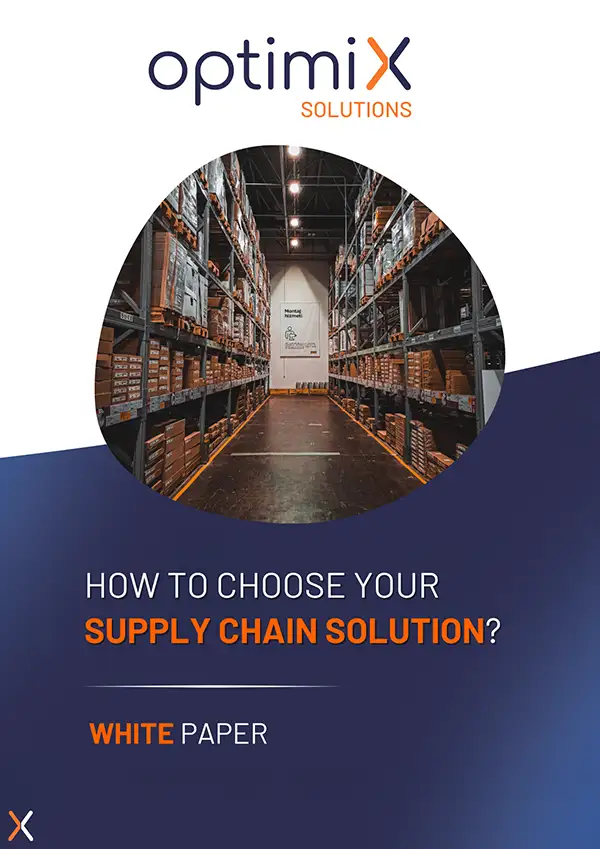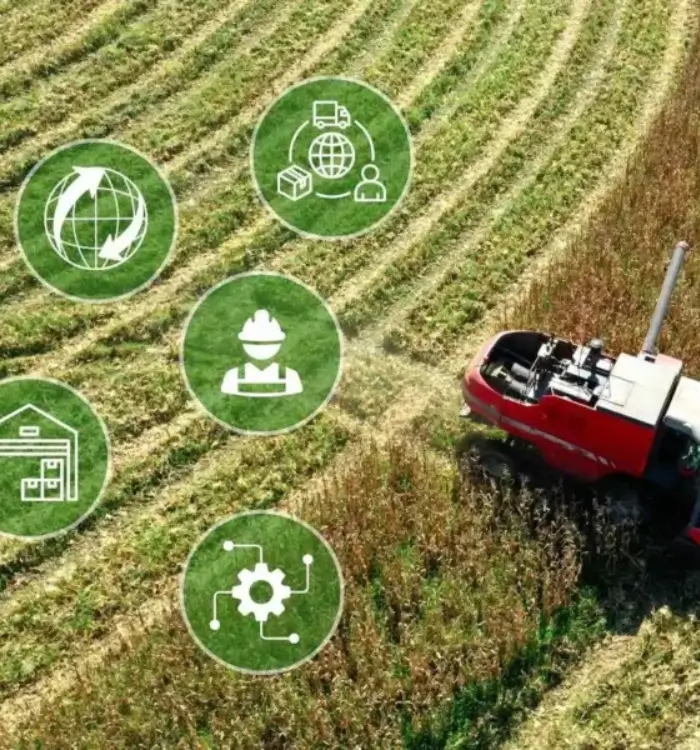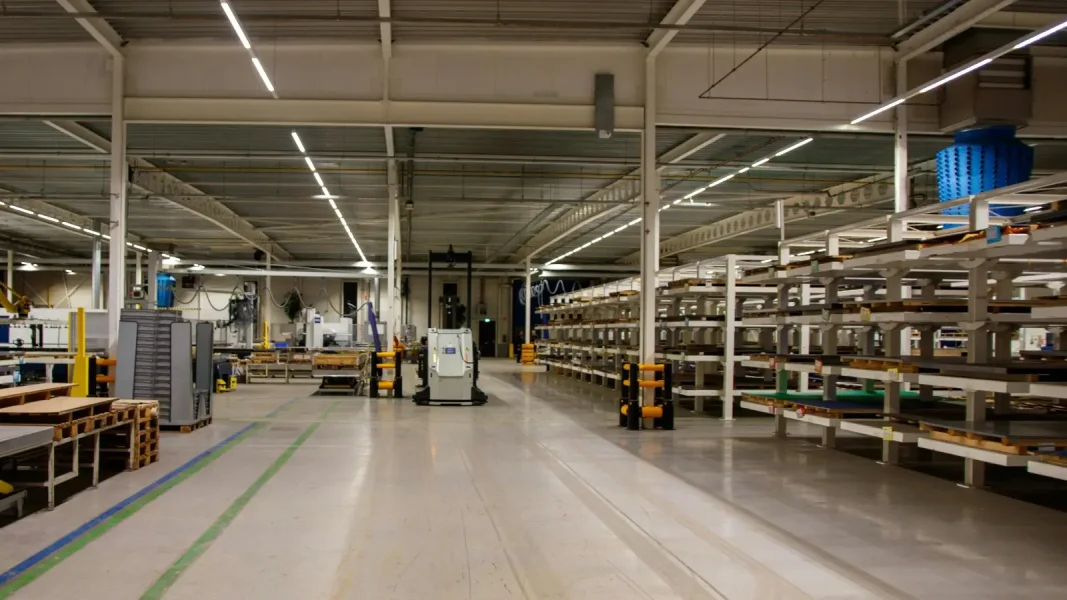The agri-food sector, an essential pillar of the global economy, is currently at a crossroads, facing unprecedented challenges.
Today more than ever, food safety and continuity of supply depend on the efficiency of agri-food distribution chains.
In this article, we explore the 5 key challenges facing the agri-food supply chain. Understanding these issues is crucial for anyone involved in the agri-food sector, from producers to distributors to consumers.
Challenges №1: Food safety regulations
In recent years, a series of major crises such as pandemics, geopolitical conflicts, climate change and inflation have put these complex systems to the test.
In addition, the sector is subject to increasingly stringent regulations due to previous health crises and a growing demand for transparency on the part of consumers. Increasingly well-informed, consumers are demanding guarantees on the origin and storage conditions of the products they consume.
Faced with these upheavals the rapid automation of processes and and increased digitalization of the distribution network are imperative if order and stability are to be preserved.
The evolution of global agri-food markets and free-trade agreements have intensified food inspection requirements for their :
➥ Origin,
➥ Quality,
➥ Safety,
➥ Nutritional value,
➥ Production ethics.
The importance of labelling, detailing the origin and processing of products, is becoming crucial for consumers and players in the value chain. However, the application of stringent regulations and trade policies can sometimes be double-edged, leading to the circulation of low-quality products and posing challenges in terms of traceability.
Problems associated with chemical contamination, pathogensand even the risk of bioterrorismas well as the dilution of trust consumers, are calling for greater regulation. The risks are exacerbated by trade with regions where food safety standards are laxer, raising serious concerns for global safety.
In this context, it is vital for food companies to comply not only with local standards, but also with those of export markets, which can vary widely. Investment in state-of-the-art traceability technologies technologies.
These technologies make it possible to track every product through every link in the distribution chain, from farmland to end consumer. The use of sophisticated software that consolidates data from every point of contact ensures total visibility across the value chain.
Challenges №2: Food waste
Temperature temperature and speed of delivery are essential for maintaining product quality. This is particularly true for perishable goods such as fruit, vegetables and meat. A major challenge lies in the transport of non-perishable products, such as wheat and corn, whose quality can deteriorate during long waits in port due to humidity.
To overcome these obstacles, it is crucial to adopt an effective delivery management and transport tracking strategy. This would reduce unloading times and prolonged queues at grain silos, processing plants and other key infrastructure.
Moreover, a large proportion of food losses occur at the earliest stages of the supply chain. According to the United Nations Environment Programme, some 300 million tonnes of food are wasted every year worldwide. The integration of advanced technologies and the modernization of market infrastructures are recognized solutions for reducing these losses. At the same time, it is crucial to optimize processes forecasting processes to improve the responsiveness and efficiency of the supply chain, thereby promoting expansion and sustainable growth.
Challenges №3: Commodity volatility
The agri-food sector is constantly affected by major fluctuations in raw material costs. These fluctuations are generally influenced by a variety of external factors, such as adverse weather conditions, health crises affecting crops and livestock, as well as geopolitical tensions that may arise.
In 2023, the industry recorded considerable cost increases, including a 57% for energyand 29% for agricultural raw materialsThis exacerbated the pressure on producers’ margins. These increases continued in 2024, intensifying the challenges for industry players who must also meet consumer expectations in a period of high inflation.
Faced with these challenges, it is crucial for companies to develop effective risk management strategies. One of the most relevant approaches is to diversify supply sources. This method reduces dependence on a single supplier or region, minimizing the risk of interruption. In addition, the adoption of forward contracts or on commodity markets can prove beneficial. These financial instruments offer the possibility of fixing raw material prices in advance, reducing uncertainty and enabling more stable planning.
Challenges №4: Communication fragmentation
The agri-food supply chain faces significant challenges related to ineffective communication, exacerbated by the multiplicity of stakeholderseach operating according to its own transport and communication methods. This situation often results in fragmented and uneven knowledge of operations between the various players, which can lead to costly errors, process inefficiencies and excessive waste.
Inconsistencies and delays
The diversity of methods and the lack of direct interaction between individuals within the same chain can lead to delays in product movement. These delays increase the risk of bacterial growth, food contamination and product spoilage.
Additional costs and loss of confidence
Misunderstandings and erroneous information from different parts of the chain can lead to additional costs associated with corrective activities. In addition, it can reduce overall confidence in the information shared within the network, reinforcing mistrust between suppliers and customers.
Happily, the adoption of supply chain solutions in supply chain management can help overcome these challenges. Today’s tools offer rapid integration and a range of services tailored to food companies, including a complete view of the supply chain in near real time.
By strengthening communication within the agri-food supply chain, companies can significantly improve operational efficiency, reduce errors and minimize waste, while building trust between all stakeholders.
Challenges №5 : Automating the supply chain
Although the implementation of technologies such as time slot management and delivery tracking is technically and financially accessible, many companies are still reluctant to take the plunge.
One of the most visible indicators of this lack of automation is the persistence of long long queues in warehouses. Efficient management of the agri-food supply chain requires fluid data exchange between all players, supported by delivery planning and tracking systems.
The integration of advanced technologies such as radio frequency identification (RFID) and Internet of Things (IoT) sensors (IoT) provides valuable visibility into the movement of raw materials, production processes and distribution channels. This visibility enables informed decision-making, reducing the risk of disruption and enabling proactive responses to market fluctuations. What’s more, automated inventory tracking improves accuracy demand forecastsminimizing surpluses and storage costs.
Managing the agri-food supply chain, whether local or global, is a complex task requiring innovative and robust solutions.
Companies need the right tools to improve inventory management, ensure product safety and quality, and respond effectively to customer demands. The use of supply chain solutionssolutions, based on artificial intelligence and machine learning, create resilient and flexible supply chains, capable of adapting to market disruptions.
Finally, focusing on sustainability, flexibility and operational efficiency will guarantee quality products and customer loyalty.
In this way, retailers will not only be able to meet current challenges, but also prepare for future disruptions.
Talk to our supply chain experts:









